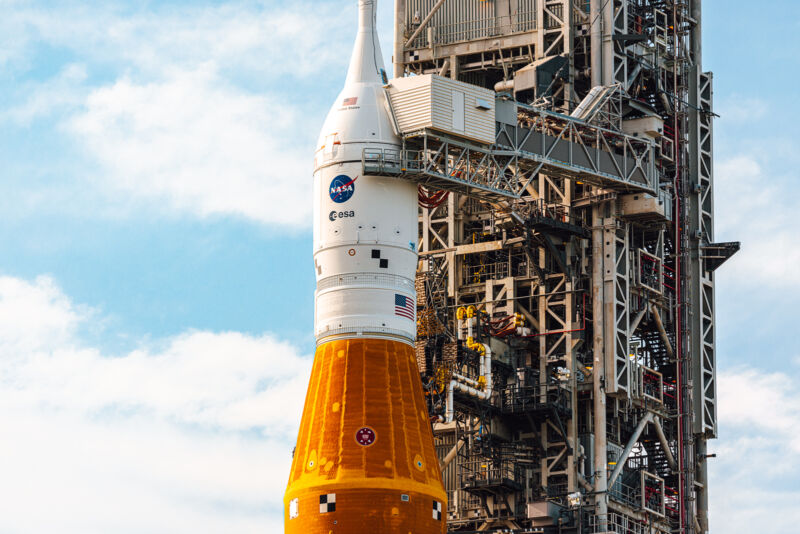
Enlarge / The upper part of the Space Launch System rocket and the Orion spacecraft likely faced the strongest wind gusts on Thursday morning. (credit: Trevor Mahlmann)
Early on Thursday morning, Hurricane Nicole made landfall near Vero Beach, on Florida's eastern coast. Because Nicole had a very large eye, nearly 60 miles in diameter, its strongest winds were located well to the north of this landfalling position.
As a result of this, Kennedy Space Center took some of the most intense wind gusts from Nicole late on Wednesday night and Thursday morning. While such winds from a Category 1 hurricane are unlikely to damage facilities, they are of concern because the space agency left its Artemis I mission—consisting of the Space Launch System rocket and Orion spacecraft—exposed on a pad at Launch Complex-39B. The pad is a stone's throw from the Atlantic Ocean.
How intense were the winds? The National Weather Service hosts data from NASA sensors attached to this launch pad's three lighting towers on a public website. It can be a little difficult to interpret the readings because there are sensors at altitudes varying from 132 feet to 457 feet. Most of the publicly available data appears to come from an altitude of about 230 feet, however, which would represent the area of the Space Launch System rocket where the core stage is attached to the upper stage. The entire stack reaches a height of about 370 feet above the ground.
No comments:
Post a Comment